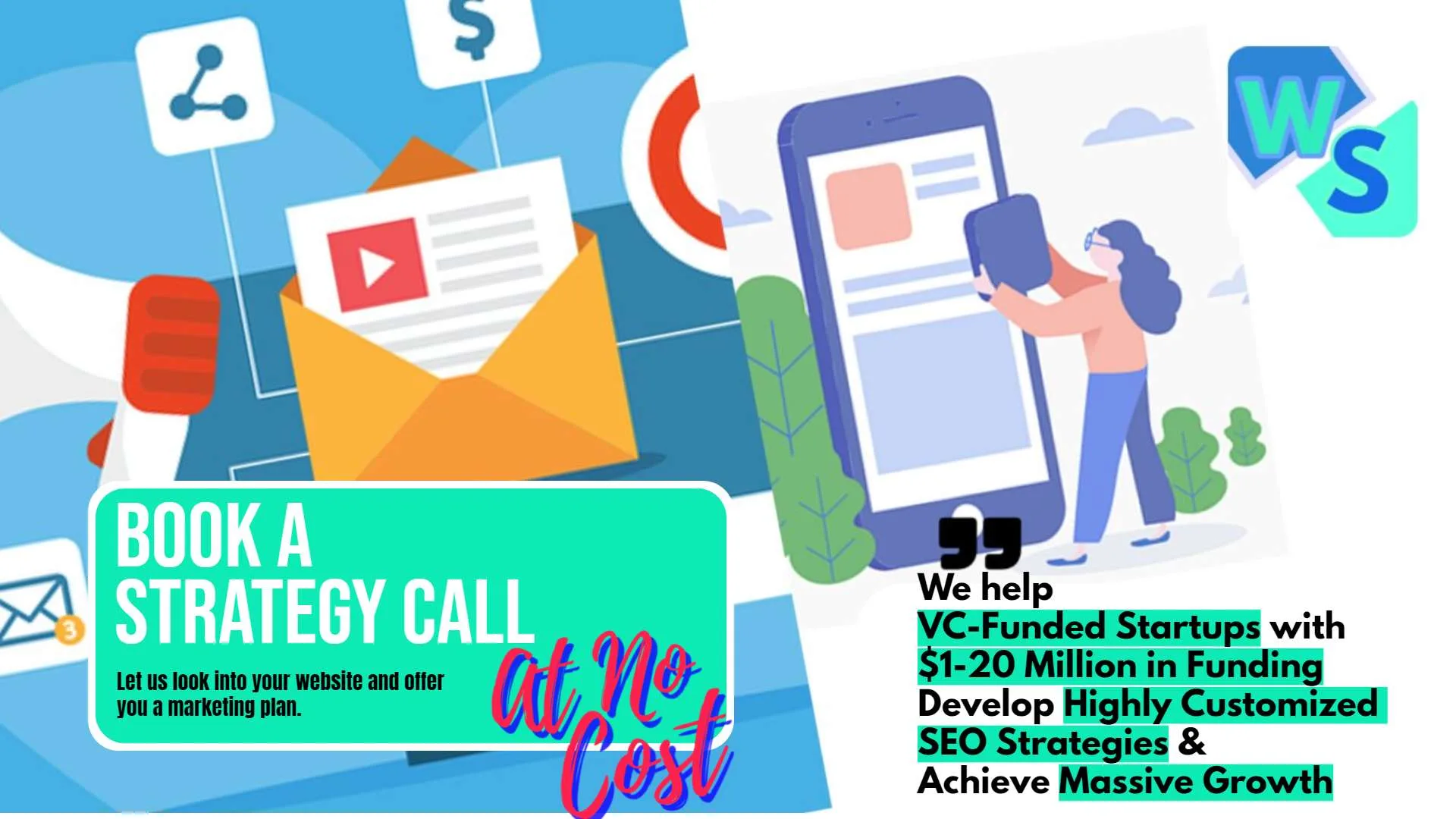Creating a social media posting calendar is crucial for managing your content, staying consistent, and maximizing your engagement. It helps you plan ahead, maintain a steady flow of posts, and ensures that your social media strategy aligns with your business goals. In this article, we’ll guide you through the steps to create an effective social media posting calendar. Let’s get started!
Understanding the Importance of a Social Media Calendar

A social media calendar is a vital tool for any business aiming to maintain a robust online presence. It goes beyond mere scheduling; it’s about strategically planning your content to meet your business objectives. For startup founders, this can be a game-changer in managing resources, maintaining consistency, and achieving measurable results.
Streamlined Content Creation Process
A social media calendar helps streamline the content creation process. By planning ahead, you can organize content creation in batches, which is more efficient than creating posts on an ad-hoc basis.
Batch Content Creation: Plan specific days dedicated to creating and scheduling content. This approach allows you to focus on high-quality production without the daily pressure of content deadlines. For example, dedicate one day a week to creating all posts for the following week.
Content Pillars: Establish key content pillars that align with your brand’s values and goals. These pillars will serve as the foundation for your content, ensuring that every post aligns with your overarching strategy. For example, if you’re a health and wellness startup, your pillars might include fitness tips, nutritional advice, product highlights, and customer success stories.
Enhanced Collaboration and Accountability
A social media calendar enhances collaboration and accountability within your team. It provides a clear roadmap of what needs to be done, who is responsible for each task, and deadlines for completion.
Team Coordination: Use collaborative tools like Trello, Asana, or Google Sheets to create a shared social media calendar. This allows team members to see the content plan, contribute ideas, and track progress. Assign specific roles, such as content creator, graphic designer, and social media manager, to streamline the workflow.
Approval Workflows: Implement approval workflows to ensure all content meets your brand’s standards before it goes live. This can involve having a designated team member review and approve posts for accuracy, tone, and compliance with your brand guidelines.
Data-Driven Strategy
A social media calendar enables you to take a data-driven approach to your social media strategy. By tracking the performance of your posts, you can make informed decisions about future content.
Analytics Integration: Integrate your social media calendar with analytics tools to monitor the performance of each post. Tools like Hootsuite, Buffer, and Sprout Social provide insights into engagement rates, reach, and audience demographics. Use this data to identify what types of content resonate most with your audience.
Iterative Improvements: Use the insights gained from your analytics to refine your strategy continuously. For example, if you notice that posts with videos receive higher engagement, plan to include more video content in your calendar. Regularly review your calendar to ensure it aligns with your performance goals.
Maximizing Campaign Impact
A social media calendar allows you to plan and execute campaigns more effectively. Whether it’s a product launch, seasonal promotion, or awareness campaign, a calendar ensures all components are coordinated for maximum impact.
Campaign Planning: Outline your campaigns in your social media calendar, detailing each stage from pre-launch teasers to post-campaign analysis. For a product launch, you might plan a series of posts that build anticipation, introduce the product, highlight features, and share customer testimonials.
Cross-Platform Consistency: Ensure consistency across all social media platforms by planning your posts in a unified calendar. This helps maintain a cohesive brand voice and message, whether you’re posting on Facebook, Instagram, Twitter, LinkedIn, or Pinterest.
Crisis Management and Flexibility
A social media calendar also prepares you for crisis management and unexpected changes. Having a plan in place allows you to quickly adjust your content strategy in response to unforeseen events.
Crisis Response Plans: Include contingency plans in your calendar for potential crises or emergencies. Outline steps for pausing scheduled posts, crafting appropriate responses, and keeping your audience informed. For example, in the event of a significant industry disruption, you might need to shift your focus to addressing customer concerns and providing relevant updates.
Content Flexibility: Maintain flexibility in your calendar to accommodate real-time content opportunities. While planning is essential, leave room for spontaneous posts that capitalize on trending topics or industry news. This agility can enhance your relevance and engagement.
Building a Stronger Brand Narrative
A well-structured social media calendar helps you build a stronger brand narrative by ensuring your content tells a cohesive and compelling story.
Thematic Consistency: Plan your content around themes that reflect your brand’s mission and values. For example, if sustainability is a core value, dedicate specific days or weeks to content that highlights your eco-friendly practices, partnerships, and initiatives.
Customer Journey Mapping: Align your social media calendar with the different stages of your customer journey. Create content that addresses the needs and questions of your audience at each stage, from awareness and consideration to decision and loyalty. For example, share educational posts for potential customers in the awareness stage and success stories for those in the decision stage.
Setting Your Social Media Goals
Setting clear, actionable social media goals is a critical step in creating an effective posting calendar. For startup founders, these goals should align with your broader business objectives and be tailored to drive measurable outcomes. Here’s how to strategically set your social media goals to maximize your efforts.
Aligning with Overall Business Objectives
Your social media goals should directly support your overall business objectives. This alignment ensures that your social media efforts contribute to the growth and success of your startup.
Revenue Growth: If increasing revenue is a primary business objective, your social media goals should focus on driving sales. For example, set a goal to boost online sales by 20% through targeted social media promotions and advertising campaigns.
Brand Awareness: If your goal is to increase brand awareness, focus on metrics such as reach, impressions, and follower growth. For example, aim to increase your follower count by 10,000 over the next six months by running engaging campaigns and collaborations.
Customer Acquisition: If acquiring new customers is key, set goals around lead generation and conversions. For example, aim to generate 1,000 qualified leads per month through social media campaigns, gated content, and targeted ads.
Specific and Measurable Goals
Goals should be specific and measurable to track progress and make adjustments as needed.
SMART Goals: Use the SMART criteria (Specific, Measurable, Achievable, Relevant, Time-bound) to set clear and actionable goals. For example, instead of saying “increase engagement,” set a goal like “increase Instagram engagement by 15% in three months by posting daily and running weekly contests.”
Key Performance Indicators (KPIs): Identify KPIs that align with your goals. For example, if your goal is to increase website traffic, track metrics like click-through rates (CTR), referral traffic from social media, and time spent on your site. Regularly review these KPIs to measure your progress.
Audience-Centric Goals
Consider your audience’s needs and preferences when setting your social media goals. Engaging your audience effectively can lead to higher satisfaction and loyalty.
Content Relevance: Set goals to provide more relevant and valuable content to your audience. For example, aim to increase the number of educational posts by 30% over the next quarter, based on feedback and engagement metrics.
Engagement Rates: Focus on increasing engagement rates by creating content that resonates with your audience. For example, aim to increase average post engagement (likes, comments, shares) by 25% within six months by utilizing interactive content such as polls, quizzes, and live sessions.
Customer Feedback: Set goals to gather more customer feedback through social media. For example, aim to increase the number of customer reviews and testimonials by 50% in the next quarter by encouraging satisfied customers to share their experiences.
Platform-Specific Goals
Different platforms have unique strengths and user behaviors. Tailor your goals to leverage the specific advantages of each platform.
Instagram: On Instagram, focus on visual engagement and community building. Set goals like increasing story views by 30% through regular updates and interactive stickers, or boosting follower engagement by hosting monthly Instagram Live Q&A sessions.
LinkedIn: For LinkedIn, concentrate on professional networking and thought leadership. Set goals to increase the number of LinkedIn Pulse articles published by 25% in the next six months or to grow your LinkedIn group membership by 500 members by sharing valuable industry insights.
Twitter: On Twitter, emphasize real-time engagement and customer service. Aim to reduce response time to customer inquiries to under one hour and increase retweets by 20% through timely, relevant content and active participation in trending conversations.
Content-Specific Goals
Define goals that focus on the types of content you will create and share to achieve your broader objectives.
Video Content: If video content performs well for your audience, set goals to increase your video output. For example, aim to publish two videos per week and increase average video views by 40% within three months through high-quality production and strategic promotion.
User-Generated Content: Encourage user-generated content to build community and trust. Set a goal to increase the amount of user-generated content shared by 50% in the next quarter by launching a hashtag campaign and offering incentives for participation.
Educational Content: If your audience values educational content, set a goal to publish one in-depth blog post per week and increase blog shares on social media by 30% over the next six months through targeted promotions and collaboration with influencers.
Monitoring and Adjusting Goals
Regularly monitor your progress and be prepared to adjust your goals based on your performance and changing business needs.
Monthly Reviews: Conduct monthly reviews of your social media metrics to assess progress toward your goals. Identify what’s working and what isn’t, and make necessary adjustments to your strategy.
Flexibility: Be flexible and ready to pivot if your initial goals aren’t yielding the desired results. For example, if you notice that a particular type of content isn’t performing well, adjust your content strategy and goals to focus on what’s resonating with your audience.
Continuous Improvement: Use the insights gained from your reviews to continuously refine your goals and strategies. Set incremental goals that build on your successes and address any challenges.
Choosing the Right Platforms
Choosing the right social media platforms is crucial for maximizing your startup’s reach and engagement. Each platform has its own strengths, audience demographics, and content formats. Strategic selection ensures that your efforts are focused where they will have the most impact. Here’s how to choose the right platforms for your social media strategy.
Identifying Your Audience’s Preferred Platforms
Understanding where your audience spends their time online is the first step in selecting the right platforms.
Audience Research: Conduct thorough research to identify which platforms your target audience uses most frequently. Use tools like Google Analytics, social media insights, and market research reports to gather data. For example, if your target audience is primarily teenagers and young adults, platforms like Instagram and TikTok might be more effective.
Demographic Insights: Look at demographic data for each platform. For example, LinkedIn is popular among professionals and B2B audiences, while Pinterest has a strong following among women and people interested in DIY, crafts, and home decor. Match your audience demographics with the platform’s user base to ensure alignment.
Analyzing Platform Strengths and Weaknesses
Each social media platform offers unique features and has different strengths. Analyzing these can help you decide where to focus your efforts.
Content Type Suitability: Consider what types of content work best on each platform. Instagram and Pinterest are ideal for visual content, LinkedIn is great for professional articles and networking, and Twitter is perfect for real-time updates and conversations. Match your content strengths with the appropriate platforms.
Engagement Potential: Evaluate the engagement potential of each platform. Platforms like Facebook and Instagram often have higher engagement rates due to their features like Stories, live video, and direct messaging. Choose platforms where your content is likely to generate the most interaction.
Advertising Opportunities: Assess the advertising opportunities available on each platform. LinkedIn offers advanced targeting options for B2B marketing, Facebook and Instagram provide robust ad tools for reaching broad audiences, and TikTok offers innovative ad formats for younger demographics. Consider your advertising goals and budget when selecting platforms.

Leveraging Platform-Specific Features
Maximizing the unique features of each platform can enhance your social media strategy.
Instagram: Utilize Instagram Stories, IGTV, and Reels to share engaging short-form and long-form video content. Leverage Instagram Shopping if you’re in e-commerce to allow users to shop directly from your posts. Use hashtags and geotags to increase discoverability.
Facebook: Take advantage of Facebook Groups to build communities around your brand. Use Facebook Live to engage with your audience in real-time. Facebook’s robust ad platform allows for precise targeting, making it ideal for promoting products and services.
LinkedIn: Use LinkedIn’s publishing platform to share thought leadership articles and industry insights. Participate in LinkedIn Groups to connect with professionals in your industry. Utilize LinkedIn Ads to target decision-makers and professionals.
Twitter: Engage in real-time conversations using Twitter’s fast-paced platform. Use Twitter Polls to gather feedback and insights from your audience. Leverage trending hashtags to join popular conversations and increase your reach.
Pinterest: Create visually appealing pins and boards that showcase your products, services, and blog content. Use Pinterest’s search functionality to optimize your pins for discoverability. Pinterest’s visual search tool can also help users find your products more easily.
TikTok: Create short, engaging videos that highlight your brand’s personality. Participate in trending challenges and use popular sounds to increase your content’s visibility. Collaborate with TikTok influencers to reach a wider audience.
Resource Allocation
Consider your resources when choosing which platforms to focus on. It’s better to have a strong presence on a few platforms than a weak presence on many.
Team Capacity: Assess your team’s capacity to manage multiple platforms. If you have a small team, it might be more effective to focus on one or two platforms where you can consistently create high-quality content and engage with your audience.
Content Creation: Evaluate your ability to create content suitable for each platform. If your team excels in creating visual content, focus on platforms like Instagram and Pinterest. If you have strong writing skills, LinkedIn and Twitter might be better fits.
Budget Considerations: Factor in your budget for advertising and content creation. Some platforms may require more investment in creative assets and ad spend. Allocate your budget where it will have the most impact based on your goals and audience.
Testing and Iteration
Testing and iterating your platform strategy can help you optimize your efforts over time.
Pilot Programs: Start with pilot programs on a few selected platforms to test your strategy. Monitor the performance and engagement levels to determine which platforms yield the best results. For example, run a three-month campaign on Instagram and LinkedIn to see which generates more leads and engagement.
Analytics and Adjustments: Use analytics tools to track performance metrics across different platforms. Evaluate which platforms are driving the most traffic, engagement, and conversions. Based on the data, adjust your strategy by doubling down on high-performing platforms and reconsidering or refining your approach on lower-performing ones.
Feedback Loop: Regularly gather feedback from your audience about their preferred platforms and types of content. Use surveys, polls, and direct interactions to understand their preferences. Adjust your platform strategy based on this feedback to better meet their needs.
Building an Integrated Strategy
An integrated strategy ensures that your efforts on different platforms complement each other.
Cross-Promotion: Promote your content across different platforms to maximize reach. For example, share a LinkedIn article on your Twitter feed or promote your Instagram Stories on Facebook. Cross-promotion can drive traffic and engagement across your platforms.
Unified Brand Voice: Maintain a consistent brand voice and message across all platforms. This helps reinforce your brand identity and ensures that your audience has a cohesive experience, whether they interact with you on Instagram, LinkedIn, or Twitter.
Content Repurposing: Repurpose content to fit different platforms. For example, turn a blog post into a series of tweets, an infographic for Pinterest, and a video for YouTube. This maximizes the value of your content and ensures it reaches a broader audience.
Planning Your Content
Effective content planning is at the heart of a successful social media posting calendar. It involves brainstorming ideas, creating a balanced mix of content types, and scheduling posts strategically. Here’s how to plan your content with a strategic and actionable approach tailored for startup founders.
Brainstorming Content Ideas
Generating fresh and relevant content ideas is crucial for keeping your social media channels engaging.
Audience Feedback: Regularly solicit feedback from your audience to understand their interests and pain points. Use surveys, polls, and direct interactions to gather insights. For example, ask your followers what topics they’d like to see more of or what challenges they face that you could help address.
Content Gap Analysis: Conduct a content gap analysis to identify areas where your competitors are not providing sufficient content. Use tools like BuzzSumo or SEMrush to analyze your competitors’ content and find gaps that you can fill with your unique insights.
Trending Topics: Stay updated on industry trends and news. Use tools like Google Trends, Feedly, and social media listening to identify trending topics that are relevant to your audience. Incorporate these topics into your content plan to keep your posts timely and relevant.
Creating a Content Mix

A diverse content mix keeps your social media feed interesting and caters to different audience preferences.
Educational Content: Provide value to your audience by sharing educational content. This can include how-to guides, tutorials, industry insights, and expert tips. For example, if you’re a tech startup, create posts that explain complex technical concepts in simple terms or provide step-by-step guides for using your product.
User-Generated Content (UGC): Encourage your audience to create content related to your brand. Share their photos, videos, and testimonials on your social media channels. This not only builds community but also provides authentic content. Launch a UGC campaign with a branded hashtag to make it easy for users to participate and for you to track submissions.
Behind-the-Scenes: Humanize your brand by sharing behind-the-scenes content. Show the people behind the company, your work environment, and the processes that go into creating your products or services. For example, share a day in the life of an employee or a sneak peek into product development.
Seasonal and Event-Based Content: Plan content around seasons, holidays, and events relevant to your industry. Create a calendar of key dates and prepare content in advance. For instance, if you’re in retail, plan holiday promotions and themed posts well ahead of the holiday season.
Scheduling Posts
Scheduling your posts strategically ensures consistent engagement and maximizes your reach.
Optimal Posting Times: Identify the best times to post on each platform based on your audience’s activity. Use analytics tools provided by platforms like Instagram Insights, Facebook Insights, and Twitter Analytics to determine when your audience is most active. Schedule your posts during these peak times to increase visibility and engagement.
Content Calendar Tools: Use content calendar tools like Hootsuite, Buffer, or Trello to organize and schedule your posts. These tools allow you to plan weeks or even months in advance, ensuring you maintain a steady flow of content. They also offer features like post previews, team collaboration, and performance tracking.
Consistency and Frequency: Maintain a consistent posting schedule to keep your audience engaged. Determine a frequency that you can sustain, such as daily, weekly, or bi-weekly posts. Ensure you have a balance between not overwhelming your audience and staying top of mind.
Creating Evergreen Content
Evergreen content remains relevant over time and can continue to drive traffic and engagement long after it’s published.
Timeless Topics: Focus on topics that have lasting value, such as fundamental industry principles, best practices, and FAQs. For example, a blog post on “The Basics of SEO” can remain relevant and useful for years.
Content Refresh: Periodically update your evergreen content to keep it current. Refresh statistics, add new insights, and update any outdated information. This keeps your content fresh and ensures it continues to provide value.
Cross-Promoting Evergreen Content: Regularly share your evergreen content across different platforms. Repurpose it into different formats, such as turning a popular blog post into an infographic, a video, or a series of social media posts. This maximizes its reach and utility.
Planning Content for Campaigns
Campaigns are focused, strategic efforts to achieve specific goals, such as product launches, promotions, or awareness initiatives.
Campaign Objectives: Define clear objectives for each campaign. For instance, if you’re launching a new product, your objectives might include increasing brand awareness, driving traffic to your product page, and generating sales.
Thematic Consistency: Ensure that all content related to a campaign follows a consistent theme and message. This creates a cohesive experience for your audience and reinforces the campaign’s objectives. Use consistent visuals, hashtags, and messaging across all posts.
Campaign Timeline: Develop a detailed timeline for your campaign, outlining each stage from pre-launch to post-campaign analysis. Schedule posts to build anticipation, maintain momentum, and sustain engagement throughout the campaign.
Monitoring and Adjusting Your Content Plan
Regularly review the performance of your content and adjust your plan based on insights and feedback.
Analytics Review: Use analytics tools to track the performance of your posts. Monitor metrics such as engagement rates, click-through rates, reach, and conversions. Identify which types of content are performing well and which aren’t.
A/B Testing: Conduct A/B testing to compare different versions of content. For example, test different headlines, images, or posting times to see which variations perform better. Use the results to optimize your content strategy.
Feedback Loop: Create a feedback loop with your audience. Encourage them to share their thoughts and preferences through comments, surveys, and direct messages. Use this feedback to refine your content and better meet their needs.
Conclusion
Creating a social media posting calendar is a vital step for any startup aiming to establish a strong online presence and engage effectively with its audience. By understanding the importance of a social media calendar, setting clear and measurable goals, choosing the right platforms, and planning your content strategically, you can streamline your efforts and maximize your impact.
A well-crafted social media calendar helps maintain consistency, ensures a balanced content mix, and aligns your social media activities with your business objectives. It allows you to stay organized, save time, and adapt quickly to changes. By leveraging tools and data-driven insights, you can continuously refine your strategy to achieve better results.
Read Next:
- How to Check Mobile Usability Issues for Healthcare We
- Seasonal Keywords in the Healthcare Industry
- Branded Vs. Non-Branded Keywords in Healthcare
- Veterinary SEO: A Step-by-Step Guide
- How to Find Low-Competition Keywords






















Comments are closed.